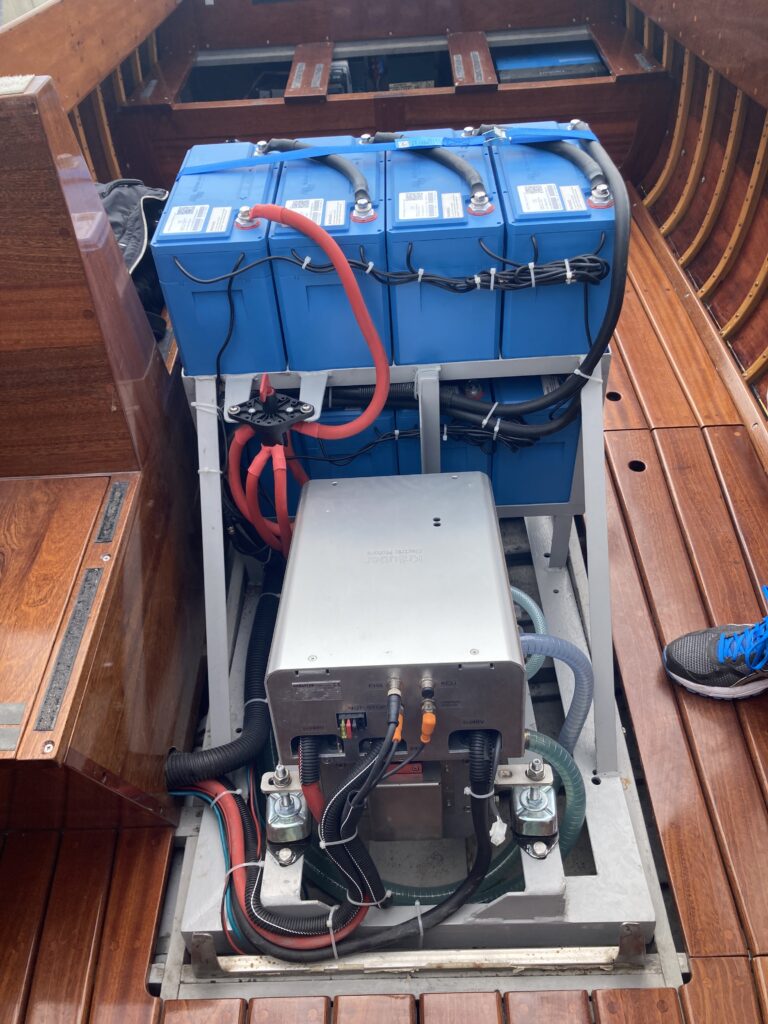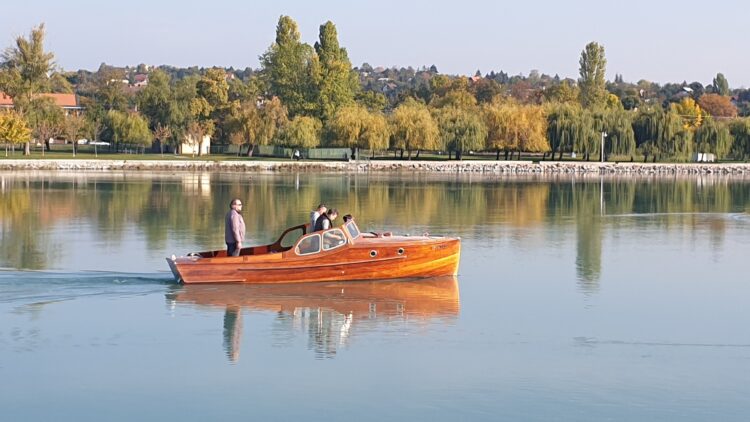
Is it possible to improve a classic Petterson ‘Gentleman’s Launch’ built in Sweden in 1938?
It seems it is.
As part of the restoration of one example of these craft, new owner Zsolt Szabó has fitted her with a state of the art electric motor and a lithium battery bank which allows her to glide silently over the regulated waters of Lake Balaton where navigation is only allowed by non-polluting craft.
At the time of purchase the seven-metre launch was fitted with an old 43kW Blade 4900 diesel engine. The shaft was out of alignment causing excessive noise and vibration, and the discomfort was exacerbated by engine fumes.
Electric Propulsion
The new electric propulsion unit is a Krautler WAd 15kW 48V 370A which weighs just 76kg and is capable of propelling a craft of up to six tons displacement.
Zsolt’s launch displaces just one ton – allowing it to be easily driven to her 8 knots maximum hull speed. At a more sedate cruising speed of 4.7 knots the vessel has a range of 65 nautical miles. It’s neat that cooling water for the new electric motor still leaves the vessel via its original exhaust pipe.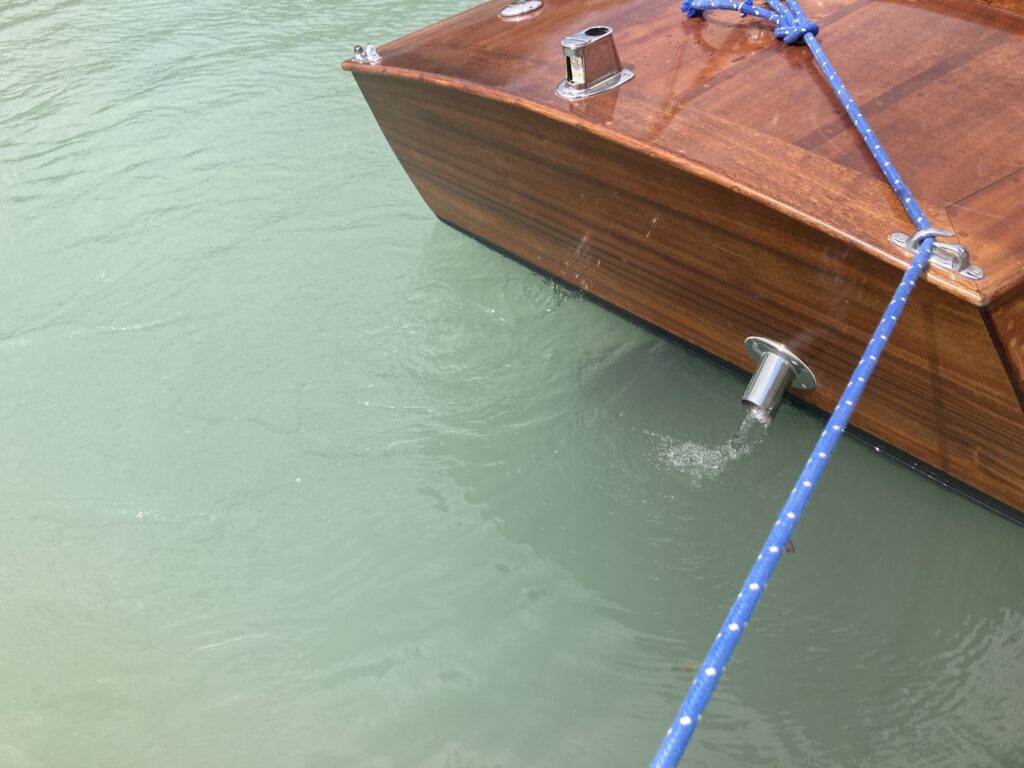
The main contractor for the project was Budapest-based yacht broker and electric boat specialist Power and Sail working in partner ship with boatbuilders Kormos Yacht Service who repaired the woodwork and made new fittings around the engine bay. The electric propulsion system was installed by Sturm und Drang.
Power Train
Energy for propulsion is stored in 8 x LiFePO4 Smart 12,8/200Ah batteries. Victron batteries are available in a number of formats and dimensions; the batteries chosen for this installation – configured into a large bank, close to the new motor – fit into the original engine compartment like a glove!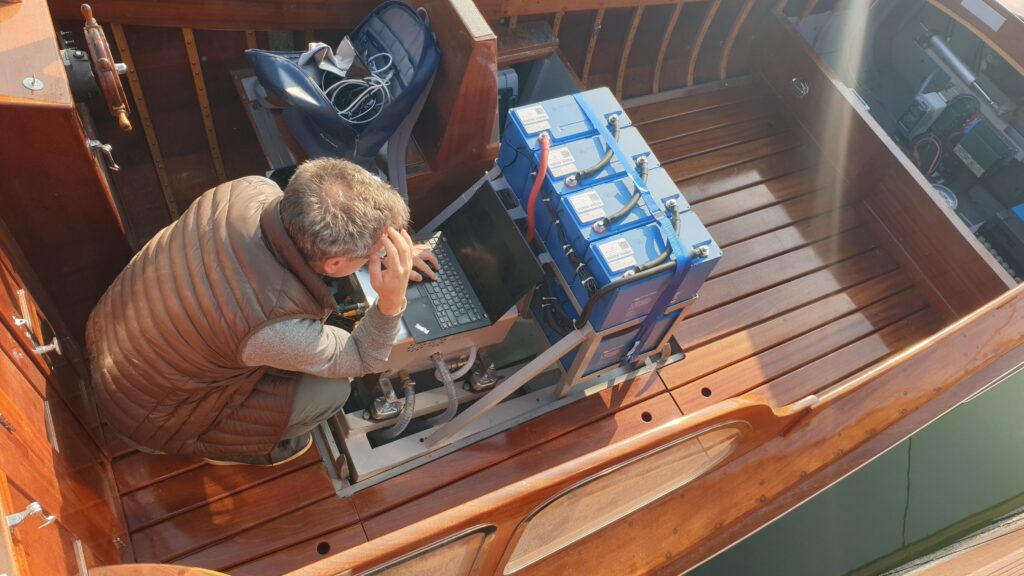
The MultiPlus-II 48/3000 Inverter/Charger has been installed to allow the use of domestic appliances on board and also provides battery charging from AC shore power. Berthed at her usual marina there is a 16A power supply – whilst elsewhere on the lake, shore power is limited to 6A. Those varying limitations present no problems for the MultiPlus II – the settings of which can easily be changed to limit the current drawn from the shore supply, avoiding annoying fuse-tripping.
More than that, if an on-board device is turned on which draws more than 6A whilst connected to shore power, the MultiPlus II will automatically provide the power shortfall straight from the battery bank, allowing the owner to enjoy using whatever appliances he has on board.
When the power hungry device is turned off, battery charging resumes using all available power up to 6A …or 16A …or indeed up to 35A – which is the maximum battery-charging current for the chosen model.
Battery charging is controlled using a Lynx Smart BMS – a battery management system specifically for Victron lithium batteries. The BMS is part of the Lynx Distributor system of components based around fused busbars offering modular extension …making for really tidy installations.
Also on board there is a Cerbo GX communication centre which provides data communication between all connected devices. Real time system data is presented to the skipper via a GX Touch 70 …a touch-screen user-interface.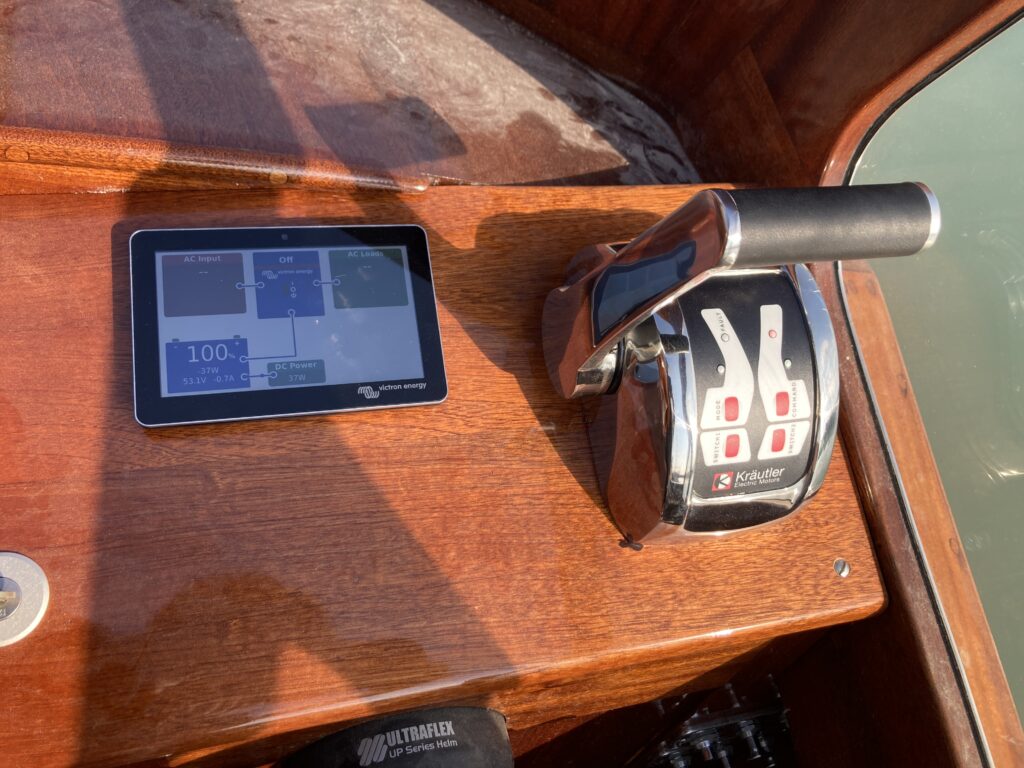
An Orion Tr 48/12 DC-DC converter, and an Orion Tr 12/24 DC-DC have been fitted. The Orion devices installed on board operate as power supplies which allow navigational equipment rated at 12V, and at 24V to be run straight from the 48V battery installation.
In combustion engined installations Orion devices are often employed as battery chargers to protect the alternator from overload – but here they are used to provide a constant voltage to navigation equipment – regardless of the load placed on the battery bank.
The Orion supply voltage is user-configurable between 10V and 15V – for the 12V output models and between 20V and 30V – for the 24V output models.
By the way, you can explore the capabilities of any Victron Energy device before you own it by downloading the VictronConnect app and searching for ‘Demo Library’ in the menu.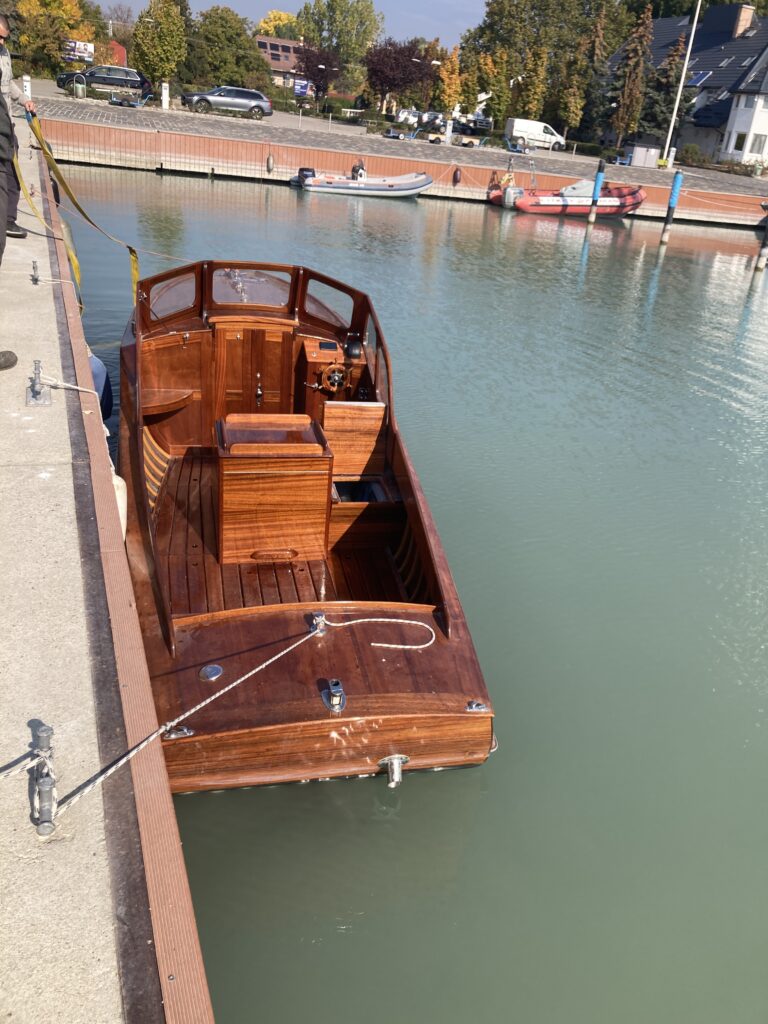
Power and Sail’s manager Tamás Lőrincze says his company has been involved with the renovation and electric-conversion of around 60 propulsion systems. Our main marine market is lake Balaton where regulation allows navigation only by electric propulsion, wind, or by hand. There are many, many boats on the lake that basically run on 100% Victron systems. Tamás suggests we run a series of blogs under the heading Victron boats of Balaton!
Power and Sail will soon be carrying out an electric conversion for a motorboat measuring over 40ft on deck.
You can explore more marine energy applications of all sizes in the Victron Marine Brochure.






